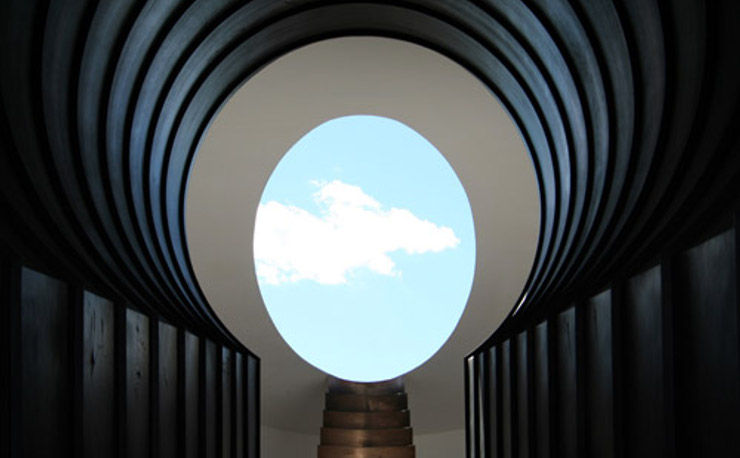Mark C. Taylor on James Turrell and Roden Crater
“Roden Crater is the most ambitious work and might well turn out to be the most important artwork of our time. For pilgrims fortunate enough to journey into Turrell’s work, the world is, indeed, transformed.”—Mark C. Taylor
In his chapter on James Turrell in Refiguring the Spiritual: Beuys, Barney, Turrell, Goldsworthy, Mark C. Taylor discusses Turrell’s extraordinary work at Roden Crater. He opens the chapter beginning by considering what it was that first drew him to Turrell:
The more I studied Turrell’s work, the richer it became and the more difficult it was to locate his work on traditional maps of art history. Turrell’s medium is light—he paints with and sculpts light. From one point of view, his work can be understood as a logical extension of impressionism. While impressionist canvases shift attention from illuminated objects to the experience of illumination, Turrell dematerializes the medium to create works of art as effervescent as the act of apprehension itself. From another point of view, his work resonates in certain ways with minimalists like Donald Judd, Richard Serra, and, most obviously, Robert Irwin. He shares Judd’s and Irwin’s interest in light and, like Serra, he has a long-standing interest in the philosophy of Maurice Merleau-Ponty, which grows out of his concern with the act of perception more than the crafted object. Such similarities should not, however, obscure the very different motivation informing Turrell’s art. Having been raised a Quaker and having studied psychology at Pomona College, Turrell and his work cannot be understood simply in terms of art history. Turrell creates his art through a unique combination of painterly and sculptural strategies, scientific experiment, and, in ways that are not immediately obvious, religious myth and ritual. Like mystics ancient and modern, as well as Eastern and Western, Turrell is obsessed with vision. While mystics stage rituals to create visions they believe will transform consciousness, Turrell combines artistic practice and scientific experiment to create a transformative experience by turning vision back on itself in order to see seeing. To see seeing is to grasp the world as a work of art and to apprehend vision as a cosmogonic act once attributed to the gods.
For time immemorial the place of spiritual transformation has been the desert. Perhaps this is one of the reasons Turrell selected an ancient volcanic field on the edge of Arizona’s Painted Desert as the site for his chef d’oeuvre. Roden Crater is the most ambitious work and might well turn out to be the most important artwork of our time. For pilgrims fortunate enough to journey into Turrell’s work, the world is, indeed, transformed.



